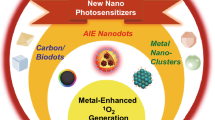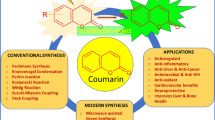Abstract
Persistent fluorinated substances, such as the fluorine-bearing pharmaceutical drugs Fluoxetine (FLX; Prozac) and Fluvoxamine maleate (FOM) together with several other substrates (fluorobenzoic acid and fluoroaliphatic model compounds), were photochemically defluorinated and degraded under UVC illumination in relatively good yields in the presence of a wide band gap metal oxide (β-Ga2O3) in heterogeneous aqueous media. The formation of fluoride ions increased with increasing illumination time under an inert nitrogen atmosphere, the transformation of the aromatic moiety was slower under these conditions, but nonetheless it did occur. The optimal amount of β-Ga2O3 loading for defluorination was 50 mg in aqueous media (0.10 mM, 100 mL); the optimal pH to defluorinate FLX was pH 6. Platinization (1 wt%) of the gallium oxide particles enhanced defluorination under an inert nitrogen atmosphere, but was decreased under an oxygen atmosphere; however, in the latter case the degradation of the substrates was facilitated as witnessed by loss of the aromatic moiety. The Ames test on the intermediate products from the photodegradation of FLX and 4-(trifluoromethyl)benzoic acid after long illumination times revealed that none were mutagenic.
Similar content being viewed by others
Notes and references
B. Halford, Pharmaceuticals have been finding their way into our environment for a long time, but just what are they doing there?, Chem. Eng. News, 2008, 86, (8), 13–17 See http://pubs.acs.org/subscribe/journals/cen/86/i08/toc/toc_i08.html.
H. Hori, Y. Yamamoto, A. Sato, N. Yamashita, S. Taniyasu, S. Kutsuna, Efficient decomposition of environmentally persistent perfluorooctanesulfonate and related fluorochemicals using zerovalent iron in subcritical water, Environ. Sci. Technol., 2006, 40, 1049–1054.
R. Dillert, D. Bahnemann, H. Hidaka, Light-induced degradation of perfluorocarboxylic acids in the presence of titanium dioxide, Chemosphere, 2007, 67, 785–792.
K. Selvam, M. Muruganandham, I. Muthuvel, M. Swaminathan, The influence of inorganic oxidants and metal ions on semiconductor sensitized photodegradation of 4-fluorophenol, Chem. Eng. J., 2007, 128, 51–57.
L. Ravichandra, K. Selvam, M. Muruganandham, M. Swaminathan, Photocatalytic cleavage of C–F bond in pentafluorobenzoic acid with titanium dioxide-P25, J. Fluorine Chem., 2006, 127, 1204–1210.
S. Geller, Crystal structure of β-Ga2O3, J. Chem. Phys., 1960, 33, 676–685.
B. Zhao, P. Zhang, Photocatalytic decomposition of perfluorooctanoic acid with β-Ga2O3 wide bandgap photocatalyst, Catal. Commun., 2009, 10, 1184–1187.
Y. Xu, M. A. A. Schoonen, The absolute energy positions of conduction and valence bands of selected semiconducting minerals, Am. Mineral., 2000, 85, 543–556.
L. L. Basov, Yu. P. Solonitsyn, A. N. Terenin, Influence of illumination on the adsorptivity of some oxides, Dokl. Akad. Nauk SSSR, 1965, 164, 122–124.
L. L. Basov, G. N. Kuzmin, I. M. Prudnikovand Yu. P. Solonitsyn, Photoadsorption processes on metal oxides, in Uspehi Fotoniki (Advances in Photonics) LGU, ed. T. H. I. Vilesov, Leningrad, Issue 6, 1976, pp. 82–120.
A. V. Emeline, V. N. Kuznetsov, V. K. Ryabchuk, N. Serpone, On the way to the creation of next generation photoactive materials, Environ. Sci. Pollut. Res., 2012, 19, 3666–3675.
H. Hidaka, H. Honjou, T. Koike, Y. Mitsutsuka, T. Oyama, N. Serpone, Photoassisted dehalogenation and mineralization of chloro/fluoro-benzoic acid derivatives in aqueous media, J. Photochem. Photobiol., A, 2008, 197, 115–123.
F. Mendez-Arriaga, T. Otsu, T. Oyama, J. Gimenez, S. Esplugas, H. Hidaka, N. Serpone, Photooxidation of the antidepressant drug Fluoxetine (Prozac) in aqueous media by hybrid catalytic/ozonation processes, Water Res., 2011, 45, 2782–2794.
K. Misaki, Y. Hisamatsu, H. Suzuki, T. Takamura-Enya, Evaluation of the mutagenicity of nitration products derived from phenalenone (1H-phenalen-1-one), Mutagenesis, 2008, 23, 359–366.
T. Takamura-Enya, M. Kawanishi, T. Yagi, Y. Hisamatsu, Structural identification of DNA adducts derived from 3-nitrobenzanthrone, a potent carcinogen present in the atmosphere, Chem.–Asian J., 2007, 2, 1174–1185.
T. Takamura-Enya, H. Suzuki, Y. Hisamatsu, Mutagenic activities and physicochemical properties of selected nitrobenzanthrones, Mutagenesis, 2006, 21, 399–404.
C. Minero, G. Marirlla, V. Maurino, D. Vione, E. Pelizzetti, Photocatalytic transformation of organic compounds in the presence of inorganic ions. 2. Competitive reactions of phenol and alcohols on a titanium dioxide-fluoride system, Langmuir, 2000, 16, 8964–8972.
C. Minero, C. Aliberti, E. Pelizzetti, R. Terzian, N. Serpone, Kinetic studies in heterogeneous photocatalysis. 6. AM1 simulated sunlight photodegradation over titania in aqueous media: a first case of fluorinated aromatics and identification of intermediates, Langmuir, 1991, 7, 928–936.
Organic Conception Diagram: in any chemical compound, a physical property depends much on the various types of intermolecular forces between molecules. The intermolecular force consists mainly of the Van Der Waal’s force, the molecular mass, the electron affinity and the polarity of the molecules. As the functional group(s) of chemical compound may differ, it has a great impact on various physical properties of the molecules. Moreover, if each of the Van Der Waals force and the electron affinity, which affect much of the properties of an organic compound, could be identified individually, the characteristics of new unknown compounds, or a mixture of such compounds, could be predicted. In the principles of the Organic Conception Diagram, the property of a compound in terms of physical chemistry is considered in such a way that the property that depends on the Van Der Waals force is called “organic” and the one that depends on the electron affinity is called “inorganic”, thus considering the property of a compound as a combination of “organic” and “inorganic” natures (the Inorganic/Organic Balance, or IOB). When considering the factors that affect various characteristics of an organic compound having hydrocarbons in its basic structure, it can be considered that the characteristics are based on two factors: the “organic nature” of hydrocarbons composed of the sequence of covalent bonds of the carbon chain, and the “inorganic nature” from the influence of the electron affinity (ion) that exists in the substitution functional group.
See NIHON EMULSION COw., LTD., Formulation Design with Organic Conceptual Diagram; http://www.nihon-emulsion.co.jp
A. Fujita, Prediction of organic compounds by a conceptional diagram, Parm. Bull., 1954, 2, 163–173.
Y. Kozuki, T. Ohtsubo, A predictive solubility tool for pesticide emulsifiable concentrate formulations, J. ASTM Int., 2009, 6, 69–81.
H. Hidaka, J. Zhao, E. Pelizzetti, N. Serpone, Photodegradation of surfactants. 8. Comparison of photocatalytic processes between anionic sodium dodecylbenzenesulfonate and cationic benzyldodecyldlmethylammonlum chloride on the TiO2, surface, J. Phys. Chem., 1992, 96, 2226–2230.
Author information
Authors and Affiliations
Corresponding author
Rights and permissions
About this article
Cite this article
Hidaka, H., Tsukamoto, T., Oyama, T. et al. Photoassisted defluorination of fluorinated substrates and pharmaceuticals by a wide bandgap metal oxide in aqueous media. Photochem Photobiol Sci 12, 751–759 (2013). https://doi.org/10.1039/c2pp25358e
Received:
Accepted:
Published:
Issue Date:
DOI: https://doi.org/10.1039/c2pp25358e




